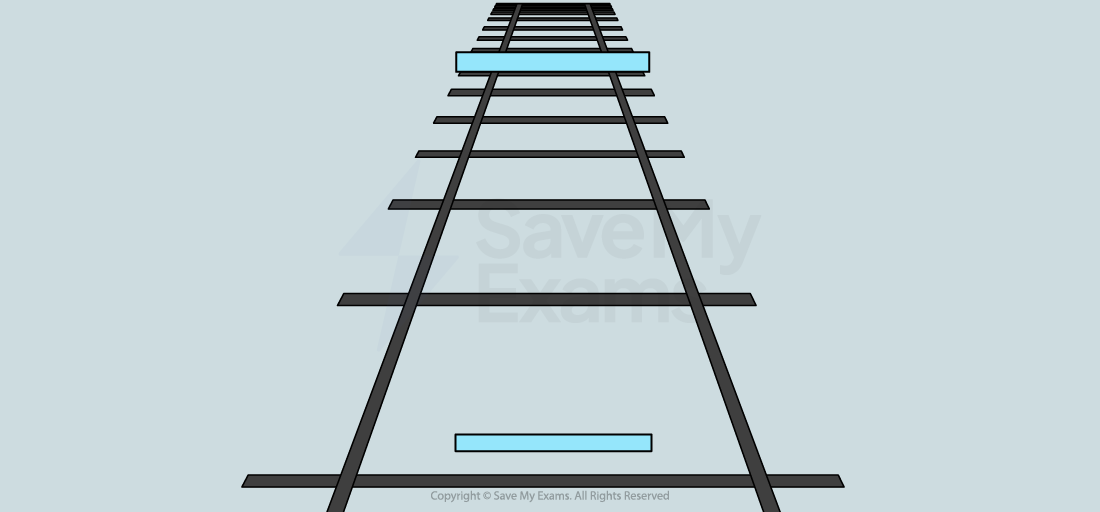The Ponzo illusion, the Muller-Lyer illusion, Rubin’s vase & the Necker cube
- The Ponzo illusion is an example of a misinterpreted depth cue
- Human beings have learned to interpret depth cues using size constancy which in turn means that a person/object who is viewed from far away appears to be smaller than their actual size
- Due to this interpretation of depth it is possible to ‘fool’ the brain into believing that differences in size occur when objects are placed at points which signal ‘far away’ i.e. higher up the image
- The brain understands that parallel lines converge when viewed from afar but if two identically-sized objects are placed across those lines at different points, the brain sees the higher object as larger than the lower object
Ponzo Illusion Diagram

The Ponzo illusion. The blue rectangles appear to be different sizes but they are the same size. The top rectangle appears to be further away.
- The Muller-Lyer illusion is an example of size constancy (as well as being a misinterpreted depth cue)
- Size constancy is part of one of the visual illusions already covered on this page: misinterpreted depth cues i.e. the human brain knows that objects/people far away in the visual field are not as small as they appear
- Human beings understand that objects/people appear to be growing larger as they move towards the viewer - they are not getting bigger as they approach (which would be quite scary!)
- Size constancy occurs when an observer is familiar with an object or person, so that the object or person appears to have a constant size when viewed from various distances
Muller-Lyer Illusion Diagram

The Muller-Lyer illusion. The lengths of the red lines appear to be different, but they are in fact the same length.
- Rubin’s vase and the Necker cube are examples of ambiguity
- Ambiguity occurs when one image can be viewed/interpreted in two different ways to give two separate meanings
- An ambiguous figure is one which may appear to show a specific image when viewed for the first time
- It is only when the viewer shifts their perspective of the image that they are able to see that another image is also depicted as well as the first one
Rubin's Vase Diagram

Rubin’s vase. Can you see a black vase and also two heads in profile facing each other?
- Another type of ambiguous figure is one which can be perceived as pointing in different directions (e.g. upwards/downwards, right/left) depending on how it is viewed
The Necker Cube Diagram

The Necker cube. There are no visual cues as to its orientation, so it can be interpreted to have either the lower-left or the upper-right square as its front side.



